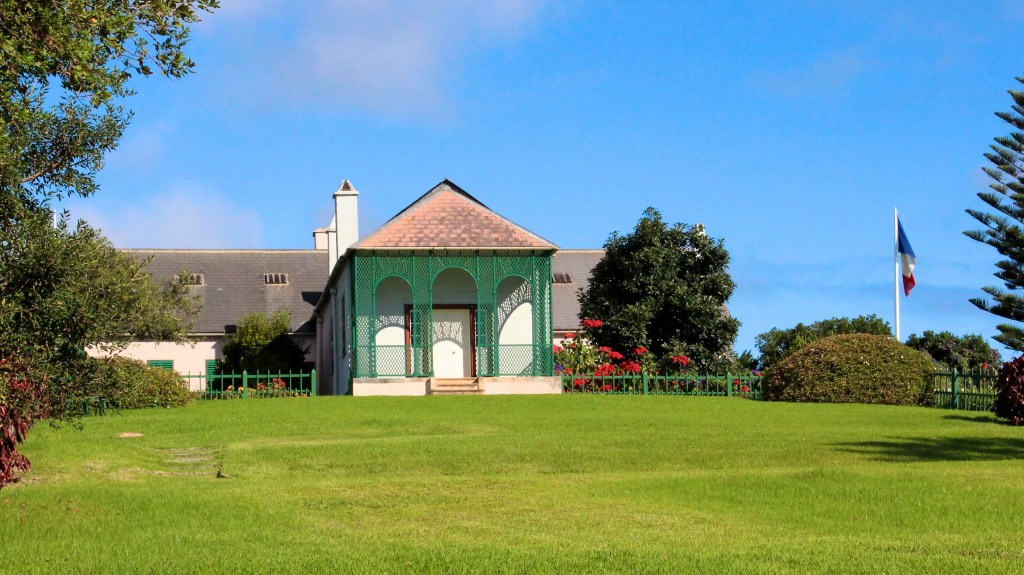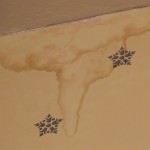 At first glance on a sunny day, Longwood House seems like a pleasant place to be exiled. The garden, in particular, presents a cheery face, with daisies, day lilies, and the native ebony bush in flower.
At first glance on a sunny day, Longwood House seems like a pleasant place to be exiled. The garden, in particular, presents a cheery face, with daisies, day lilies, and the native ebony bush in flower.
 In 1819, three years into his exile, Napoleon corralled his small entourage into planting a lush garden, much like the one that exists today. Partly to stave off boredom, partly to devise a way to push back the British sentries from their positions close to the house, Napoleon himself drew up the plans and supervised, wearing a wide-brim hat or madras scarf wound around his head. Everyone including the French generals and the Chinese servants joined in the physical labor. Lady Holland, a prominent London politician’s wife who disapproved of the English treatment of Napoleon, sent packets of seeds, including the Everlasting Daisy which today flowers throughout the island. (Was she the Hanoi Jane of her day?)
In 1819, three years into his exile, Napoleon corralled his small entourage into planting a lush garden, much like the one that exists today. Partly to stave off boredom, partly to devise a way to push back the British sentries from their positions close to the house, Napoleon himself drew up the plans and supervised, wearing a wide-brim hat or madras scarf wound around his head. Everyone including the French generals and the Chinese servants joined in the physical labor. Lady Holland, a prominent London politician’s wife who disapproved of the English treatment of Napoleon, sent packets of seeds, including the Everlasting Daisy which today flowers throughout the island. (Was she the Hanoi Jane of her day?)
 The sunshine, however, is fleeting, as trade winds sweep this high, broad plain, bringing dreary clouds, fog and frequent rain. Napoleon complained constant dampness was killing him and said the house felt like a cellar. In his two personal rooms, fabric was hung on the walls to conceal the ever-present mold. Today, despite the care and restoration, you still see and feel the effects of moisture. You begin to sympathize with the exiles, who must have felt their lives rotting away as the years passed slowly by.
The sunshine, however, is fleeting, as trade winds sweep this high, broad plain, bringing dreary clouds, fog and frequent rain. Napoleon complained constant dampness was killing him and said the house felt like a cellar. In his two personal rooms, fabric was hung on the walls to conceal the ever-present mold. Today, despite the care and restoration, you still see and feel the effects of moisture. You begin to sympathize with the exiles, who must have felt their lives rotting away as the years passed slowly by.

Excellent video. Well done! The musical background was very appropriate. Thank you!
William Savale
Thanks so much! My husband chose the music and put the video together for me. I’ll pass on your praise.
Pingback: FINDING NAPOLEON IN RICHMOND, VIRGINIA - Margaret Rodenberg
Pingback: - Margaret Rodenberg 200 year anniversary celebration on St Helena